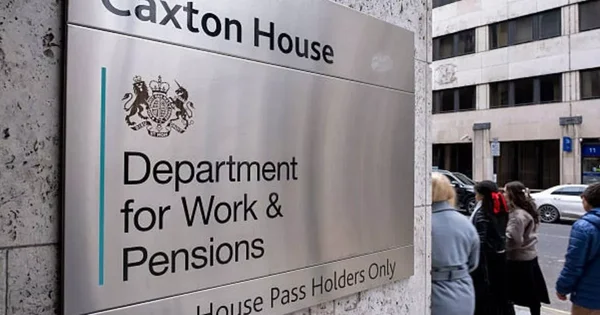Let’s Break This Down Together…
Understanding your UK tax obligations doesn’t have to be overwhelming. Whether you’ve missed a deadline, received an estimated bill from HMRC, or are unsure how payments on account work, it’s important to know what steps to take, and what your rights are. This guide explains the key rules for the 2024/25 tax year in plain English, so you can stay compliant, avoid unnecessary penalties, and feel more confident about your Self Assessment journey.
What is an HMRC estimated tax bill?
When you miss the Self Assessment deadline (31 January), HMRC doesn’t just sit around waiting forever. They’ll eventually issue what’s officially called a “determination”, basically their best guess at what you owe.
These estimated bills are legal requirements under the Taxes Management Act 1970. HMRC issues them when they have no current information to collect about your tax situation, as they rely on gathering or collecting income details through the Self Assessment system to generate an accurate tax bill.
The key thing to know is that these Calculation are often higher than what you’d actually owe if you filed properly. HMRC tends to err on the side of collecting more rather than less tax.
Why does HMRC send estimated tax bills?
The main reason is simple, you’ve missed the filing deadline. Without your tax return, HMRC has no idea what you’ve earned or what tax reliefs you might be entitled to.
These estimates serve as a prompt to get you to file your return. It’s HMRC’s way of saying, “We haven’t forgotten about you!”
They also protect government revenue. If HMRC didn’t issue estimates, people might simply never file returns and avoid paying tax altogether.
These estimates become legally enforceable if you don’t replace them with an actual tax return. HMRC can take collection action based on these figures. Ignoring an estimated bill puts you at risk of penalties and enforcement action from HMRC.
How HMRC calculates your estimated bill
HMRC typically looks at your previous year’s income and tax position as a starting point. They might even add an uplift, increasing the amount to account for potential income growth.
It’s important to explain that HMRC’s calculation does not include capital gains or student loan repayments, which must be settled separately when the final tax bill is calculated.
These calculations are pretty basic. They don’t consider changes in your circumstances like reduced income, new tax-deductible expenses, or business losses. If you run your own business, HMRC's estimate may not accurately reflect your actual profit or the money you have available, as it does not consider all the information about your income and expenses.
They also can’t account for new tax allowances or reliefs you might be entitled to in the current tax year. HMRC's estimated bill does not factor in deductions for tax already paid, such as tax deducted at source by your employer if you are an employee, or through CIS if you are self-employed.
Deductions for allowable expenses, capital allowances, and personal allowance are not always included in the estimate, which can result in a higher Calculation bill.
If you’ve never filed a return before, HMRC might base their estimate on information from employers, banks, or other third parties. They might even make a rough guess based on what they think someone in your position might earn. Note that HMRC may use information from your employer to estimate how much tax has already been taxed at source.
HMRC's systems use previous years' figures to decide your estimated bill, but they cannot confirm your current employment status or changes in your business setup.
Note: The estimated bill is only a starting point and may not reflect your true tax liability after deducting all eligible expenses and accounting for all sources of income.

Understanding Payments on Account
If you’re self-employed or need to file a self assessment tax return, you’ll likely come across the term “payments on account.” These are advance payments towards your self assessment tax bill for the upcoming tax year, designed to help you spread the cost of your income tax and national insurance contributions rather than facing a large lump sum at once.
Payments on account are made in two instalments: the first by 31st January (the same deadline as your tax return), and the second by 31st July. Each payment is usually 50% of your previous tax year’s income tax bill, including any Class 4 national insurance contributions from self employment profits. For example, if your final tax bill for the 2023/24 tax year was £3,000, you’d pay £1,500 in January 2025 and another £1,500 in July 2025 towards your 2024/25 assessment tax bill.
Your self assessment tax bill is calculated by adding up all your taxable income, this could include self employment profits, property income, savings interest, and any other relevant earnings. From this, you deduct allowable expenses, capital allowances, and your personal allowance to arrive at your taxable income. National insurance contributions are then calculated based on your self employment profits and added to your income tax bill to form your total tax liability.
Payments on account are automatically deducted from your final tax bill when you file your next self assessment tax return. If your actual tax liability for the year is higher than the payments you’ve made, you’ll need to pay the difference by the following 31st January. If you’ve overpaid, you can claim a refund from HMRC, either online through your Government Gateway account, by phone, or by post. Your online account also lets you check your tax calculation, view your payments on account, and keep track of your assessment tax return status.
It’s important to keep accurate records of your income, expenses, and any tax already deducted to ensure your self assessment tax return is complete and your payments on account are correct. If you expect your income to drop or your tax bill to be lower than last year, you can ask HMRC to reduce your payments on account, just be careful, as underestimating could lead to interest charges if you end up owing more.
Staying on top of your payments on account is key to managing your self assessment tax bill and avoiding unexpected tax issues. If you’re unsure about your tax calculation or need help with your assessment tax return, consider speaking to an accountant or contacting HMRC for support. By understanding how payments on account work, you’ll be better prepared to manage your finances and avoid last-minute surprises.
What to do if you receive an estimated tax bill
Don’t panic! The solution is straightforward, file your actual Self Assessment tax return as soon as possible.
Your filed return automatically replaces HMRC’s estimate. If you’ve overpaid based on their estimate, you’ll get a refund. If you’ve underpaid, you’ll need to pay the difference.
If you’re struggling to complete your return, contact HMRC right away. They may be more understanding if you reach out before they have to chase you. Make sure you have all the information related to your income, expenses, and receipts organised before completing your return, this will help ensure your figures are accurate and your return is processed smoothly.
Keep evidence of any special circumstances that prevented you from filing on time. This might help if you need to appeal against penalties later.
I once received an estimated bill that was nearly double my actual liability. After a frantic weekend of gathering receipts and filing my return, the relief of seeing the correct (much lower) figure was immense.
How to calculate your own tax estimate
The best way to avoid HMRC's estimates is to calculate your own tax bill before the deadline. Here's how:
Add up all your income from employment, self-employment, investments, property, and any other sources.
Apply the current tax year's personal allowance (£12,570 for 2024/25) and the relevant income tax rates to work out your liability.
Don't forget to include National Insurance contributions if you're self-employed.
Factor in any tax-deductible expenses, capital allowances, and available tax reliefs that might reduce your bill.
Remember to consider any payments on account you've already made toward this tax year.

Avoiding future estimated bills
Set calendar reminders for key Self Assessment dates, especially the 31 January filing deadline.
Keep your financial records organised throughout the year. This makes completing your return much easier when the time comes.
Consider using a personal tax app or hiring an accountant if your tax affairs are complex.
File early, you can submit your return any time after the tax year ends on 5 April. Why wait until January when the system gets clogged?
If you know you'll struggle to pay, contact HMRC about setting up a payment plan before the deadline.
Final Thoughts
HMRC estimated tax bills are best avoided by filing your Self Assessment return on time. They're usually higher than your actual liability and can cause unnecessary stress.
If you do receive an estimate, file your accurate return as quickly as possible to replace it. The sooner you file, the sooner you'll know exactly where you stand.
Understanding how tax estimates work gives you more control over your finances. This helps you avoid unwelcome surprises from HMRC.
Simplifying Self Assessment Tax Estimation
You don't need to fear tax estimates anymore with the right tools at your fingertips.
Pie app gives you a real-time view of your tax position that updates instantly as you input income and expenses.
Pie Tax handles multiple income streams in one place – from self-employment to Capital gain/loss – giving you a complete picture without the complexity.
With direct HMRC filing built in, you can submit your return with confidence and avoid those unwanted estimated bills altogether.
Take a look at Pie Tax if you'd like to see how much easier Self Assessment could be.









